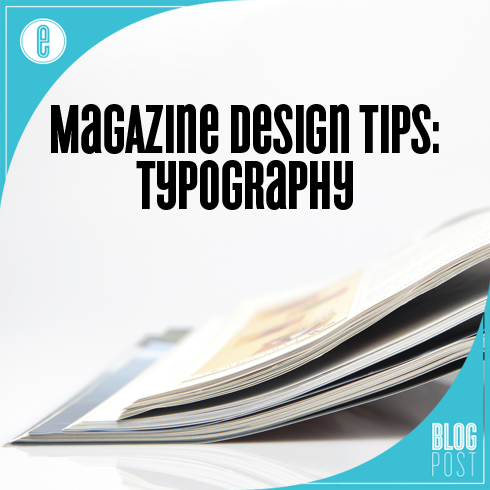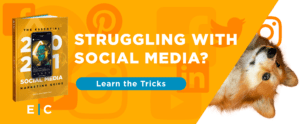
Today we’re going to expand on hints and tips to do with text that will help you make the most of your design efforts. In our previous piece we recommended that you keep text clean, but what does that really mean? Today, we hope to help you find some great ideas to give your magazine design work a typographic lift.
Choosing the right type
First things first, you need to ensure you’ve selected the right fonts for the job. In general, a magazine will have dedicated style sheets for different sections in the publication. If you’re charged with making decisions regarding which fonts should be used for copy, headlines, and accents such as pull quotes, there’re a few simple things to keep in mind:
- Legibility – make sure the fonts you choose are legible in the context you’re going to use them. The smaller the type, the fewer features you want the individual characters to have – this is why tiny page elements, such as photo credits and footers, tend to be in sans serif fonts.
- Readability – even the clearest fonts rely on well-chosen parameters for easy reading. To maximize the readability of your editorial content opt for adequate size and spacing, as well as suitable justification for the communication in question – often, left-justified text is the most readable option.
- Hierarchy – helping readers navigate is a big part of good magazine design, and establishing a hierarchy for the fonts used in the publication is an important step toward providing a simple path for readers to follow through your publication. A typical style guide has three to five fonts to provide adequate contrast, navigational queues and emphasis. A solid type hierarchy will include designations for headlines, subheadings, body text, pull quotes, as well as other call-out and support items.
Using type wisely
Once you’ve got a great set of styles established for your editorial content, you’ll want to be sure that they will be used to the best effect. This means incorporating color sensibly, adding images with care and ensuring you stick to the typographic hierarchy you’ve established.
When designing magazine spreads for news and “regular” editorial sections, it’s generally accepted that the style sheets for type be adhered to completely. However, when it comes to features and special editorial coverage, you can take the basic typographic structure you’ve established and embellish it for greater impact. Use a more dramatic font, apply additional colors and even use ornamental type if it suits your magazine’s style.
Some important things to bear in mind, particularly exploring creative typography in magazine design are:
- Font size – body copy below 10pt can cause reader fatigue, particularly where an older audience is considered. When you establish your type hierarchy, aim to provide adequate size differential so that readers are effectively ‘pulled’ through your content.
- Colors – it’s important to provide adequate contrast whenever text appears over images or color blocks. In general, you should aim to have around a 60% difference between the font and the background – check with your prepress team or consult your printer’s guidelines to ensure adequate contrast will appear on the finished page.
- Clichés – there are a number of fonts associated with particular eras in history and/or fashion, and it’s very easy to fall into the trap of using those fonts to add decorative flair to magazine design – but don’t! You can design a wonderful feature on Ancient Egyptian rituals without using Papyrus.
Our next piece in this series will focus on helping readers navigate through your publication with ease using smart design.
-FINAL(01-00)-White&Blue-01.svg)




